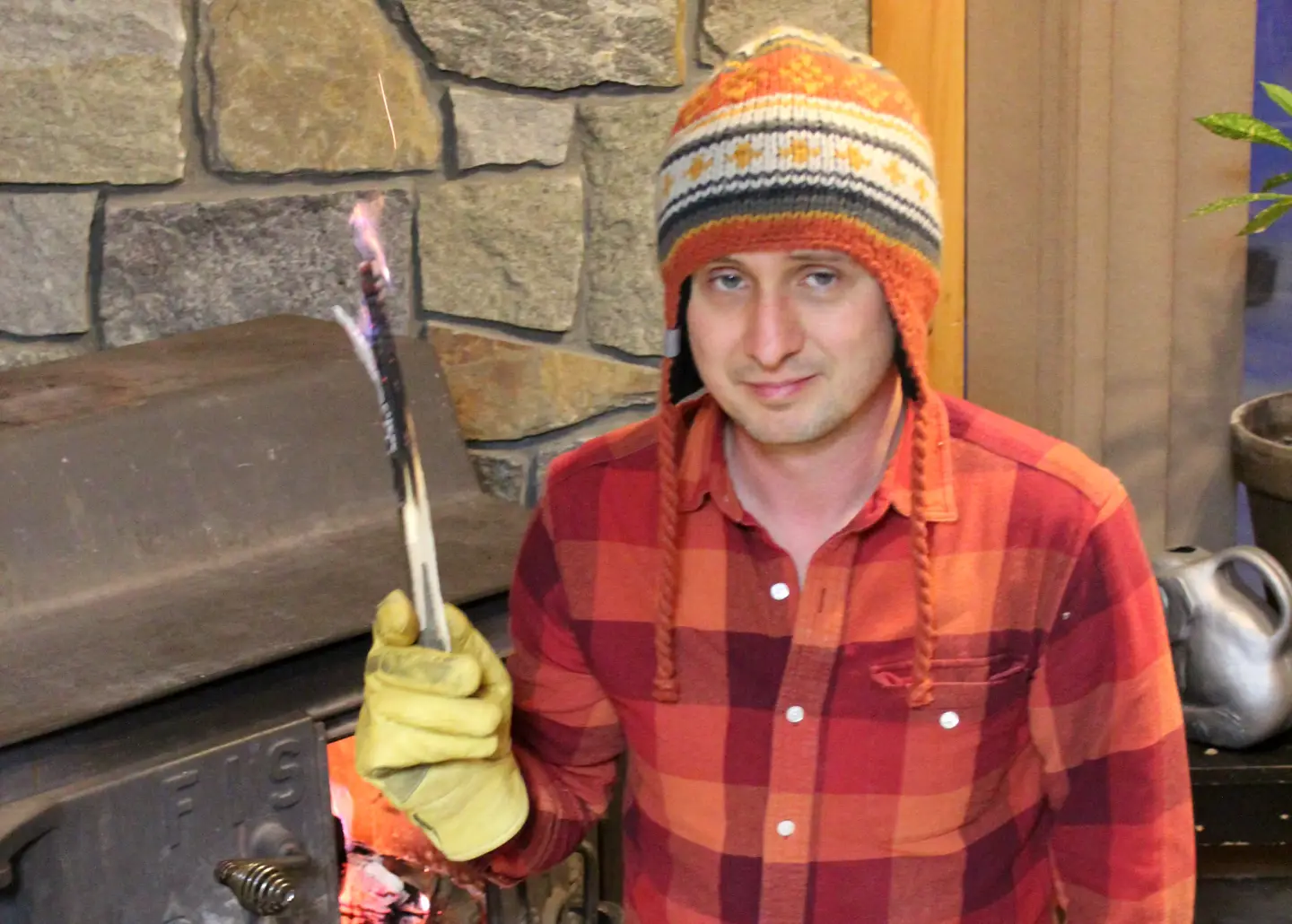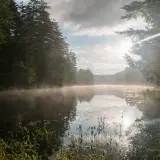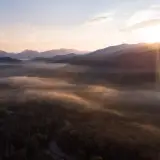Unless you’re going to lug a battery-operated space heater through the forest, a fire is your best bet for staying warm at night in the mountains. Campfires are allowed in most areas of the Adirondacks, but that doesn’t help if you can’t get one going.
First, let's take a look at the basics of fire starting, then we’ll bring it inside because nothing beats a wood stove or fireplace on a frigid winter night.

Assemble a kit
A fire starting kit is an essential item to have in your pack year-round. If you’re hiking here, you have to remember that temperatures can drop below freezing in the summer, and you should expect them to plunge below zero every night in the winter.
That means if you’re injured in the woods you’ll need to stay warm if you have to wait for help to arrive. Not to worry — it’s simple to put a kit together.
First, make sure you have something waterproof to keep your kit in. An old water bottle works well, as does a large vitamin or pill bottle. Just don’t use glass, as it can break.
The kit itself is pretty basic. Most importantly, you’ll need some tinder to light and a way to light it. The tinder can be made of many things. Peeled strips of white cedar bark work particularly well. Simply pull a few strands off the trunk of a tree, roll them up, and stick them into your bottle. Just rub the strands together to produce a fine duff that’s great for getting the rest of your fuel going.
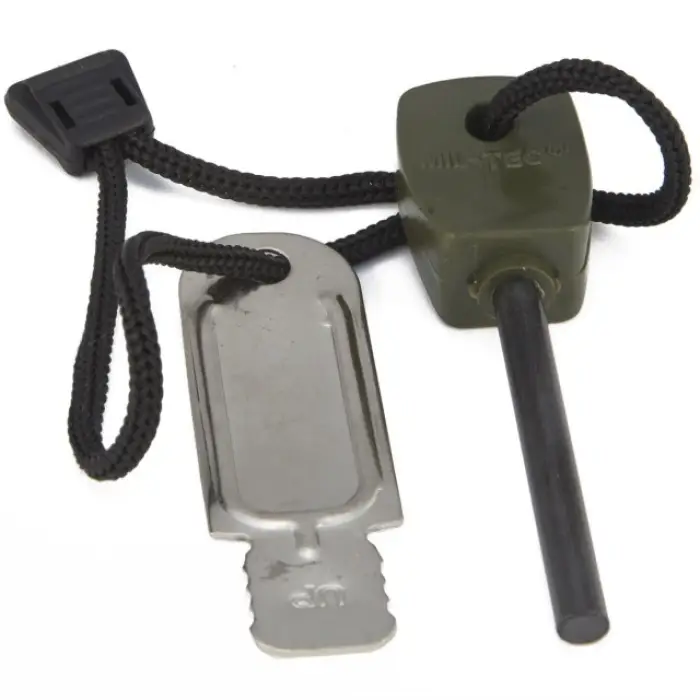
Another option is to make fire starts. One way to do this is by packing dryer lint into a cardboard egg carton, pour wax over each compartment, and cut the whole thing into separate compartments for easy carrying.
These little beauties will burn for about 15 minutes, but they need a good flame to get them going. I’ll get more into fire starting in a bit, but the takeaway is to bring both. Use the fine dander and cedar bark to get the egg starters going.
To get a flame, you’ll need something that can start even when wet. A striking stick is a cheap and reliable source for a spark, but it takes a bit of practice to get good at using it. Waterproof matches produce a flame, but they're difficult to light and they don’t burn for very long.
I like to bring a striker and a lighter, which I keep in a plastic baggie. The striker will work no matter what, but a good old fashioned lighter is a lot easier.
Time to blaze
The teepee shape is the best technique for starting a fire. But before that, it’s important to understand what a fire needs. That's simple: oxygen and fuel.
Here’s how to make it all come together. Start with a pile of tinder, which is a fancy way of saying stuff that burns easily. That can be tiny sticks, dry leaves, newspaper, or that cedar dust from your kit.
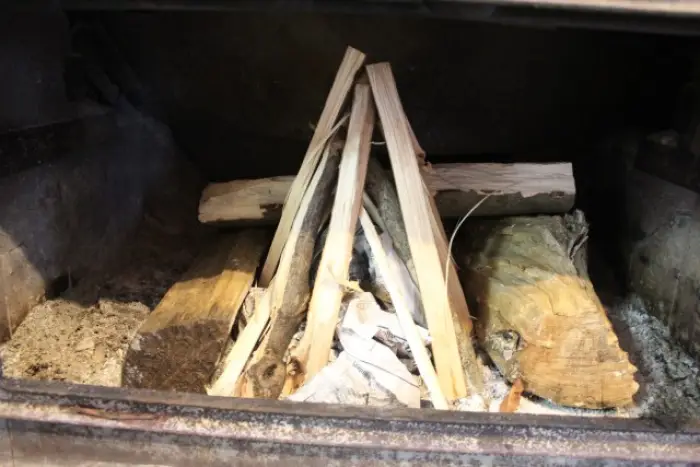
Make a small mound of tinder, then arrange some small sticks — called kindling — over it in the shape of a teepee. You can place a few bigger sticks on that, just make sure there’s space between everything to provide good airflow.
Light the tinder, and if you’ve done it right the kindling should start to take. If you’re outdoors, this whole process will be more difficult if the wood is damp. The dryer lint and wax creation I described above comes in handy for this. They burn slowly enough to dry small sticks and ignite them, which in turn will begin to dry the kindling.

Log cabin
A teepee structure is best for a bright, low maintenance fire, but if you’re looking to cook you’re better off going with a log cabin. I like to start with a small teepee, which I flank with two large, dry logs. I bridge the first two logs with two others, taking care not to topple the teepee. The idea here is simple: as the tepee burns the log cabin will catch, and the teepee will eventually collapse, creating a bed of coals.
As the bottom logs burn down they will add to the coals. Just keep placing more logs on the cabin and you’ll have a hot, slow burning structure with a level enough surface to place a cooking grate across for cooking.
Reel it in
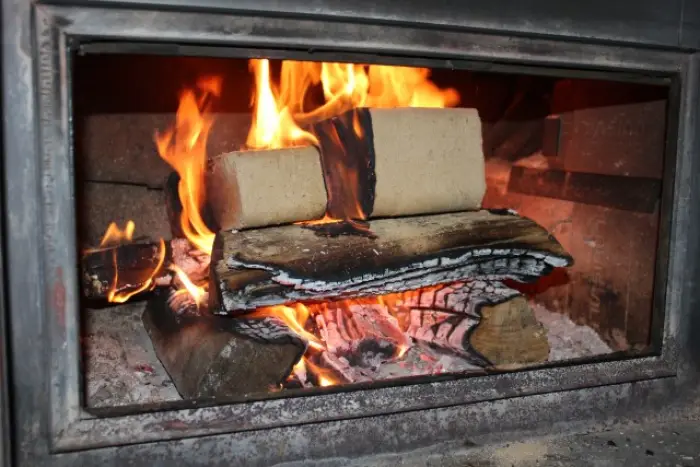
Trial and error have taught me that the teepee-log cabin method works great in a wood stove. The only difference is I start with a three-log cabin so I can easily add fuel to the teepee to get some good coals going. Once that happens, I add the fourth log and sometimes even throw another pair on top so I don’t have to mess with it as much. Within a half an hour, our house is cozy.
The key to running a wood stove is controlling the damper. Ours has one on each door — they’re big and round and open and close by turning them clockwise or counter clockwise. I keep the dampers wide open for the first half hour or so of burning. That provides plenty of air to get the wood blazing away. I then add a couple of eco bricks and close the dampers about three-quarters of the way. The result is a slow burning pile of coals that puts off a lot of heat.
Eco bricks are a great alternative to firewood, and they can be purchased at most home improvement stores. They’re essentially just compressed sawdust, which happens to burn hot, clean, and slowly. That means they don’t put out much smoke, they don’t leave much ash behind, and you don’t have to add more as often. They’re also cheap — it’s usually less than $4 for a pack of six, which will easily get you through a cold winter night.
Schroon Lake is beautiful during the colder months. Spend some time outside, then cozy up in one of our warm lodging properties.
